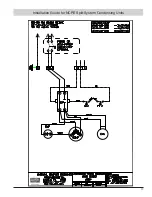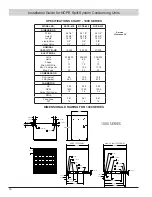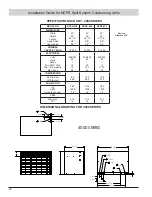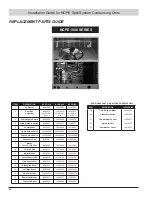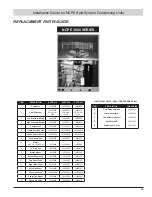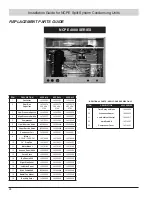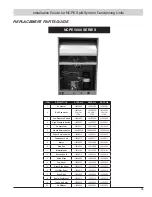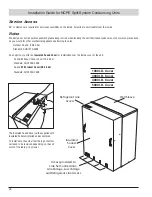
Installation Guide for NCPE Split-System Condensing Units
11
Start Up
1.
Ensure Sections 7 through 12 have been completed. Check
numbers once done.
2.
Turn on disconnect(s) to apply power to all equipment.
3.
Wait one (1) hour before starting the unit if compressor
crankcase heater accessory is used and the Outdoor Ambient
is below 70º
4.
Set system thermostat to ON.
Sequence of Operations
On a “call for cooling”, the thermostat “makes” circuits R-Y and
R-G. Circuit R-Y energizes the contactor starting the condenser
fan motor and compressor circuit. R-G energizes the indoor unit
blower relay starting the indoor blower motor.
When the thermostat is satisfied, its contacts open, de-energizing
the contactor and blower relay. Compressor and motors should
stop.
System Charge Adjustment
Temperature Measurements
Check the outdoor temperatures. Subcooling (in cooling mode) is
the only recommended method of charging above 55º F ambient
outdoor temperature. For best results the indoor temperature
should be kept between 70º F to 80º F.
Note:
It is important to return in the spring or summer to
accurately charge the system in the cooling mode when outdoor
ambient temperature is above 55º F.
Stabilize the system by operating for a minimum of 20 minutes.
At startup, or whenever charge is removed or added, the system
must be operated for a minimum of 20 minutes to stabilize
before accurate measurements can be made.
Installers Notes:
• Condenser door must be in place while adjusting subcooling
• Ambient temperature must be between 65
�
F-95
�
F
• Indoor return air temperature must be above 70
�
F
• Allow 10 to 20 minutes of run time at premium conditions
before adjusting charge
• Driving rain against the condenser coil can affect setting proper
subcooling
• Add charge to increase subcooling
• Remove charge to decrease subcooling
• Indoor units must be equipped with a thermal expansion valve
(TXV)

















